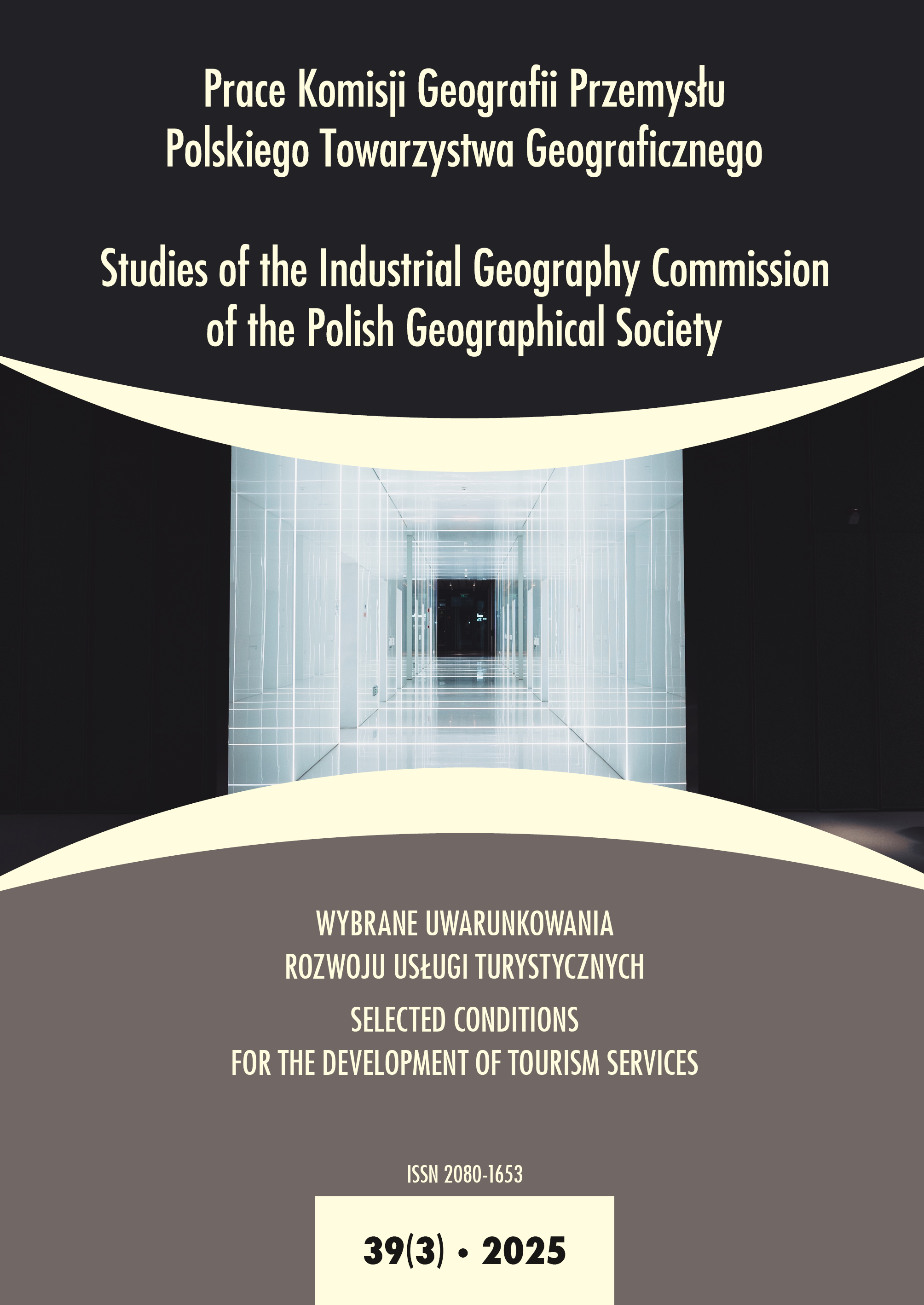Leisure Regulations versus Domestic Tourism in the People’s Republic of China: a Case Study of Macau and Yunnan Province
DOI:
https://doi.org/10.24917/20801653.393.1Keywords:
domestic tourism, Macau, People’s Republic of China, YunnanAbstract
In countries with high levels of tourism and demographic potential, such as the People’s Republic of China (PRC) domestic tourism is developing dynamically. In recent years, China has seen steady growth in domestic tourism throughout the country supported by factors such as its attractive natural and cultural landscapes, the increasing formal restrictions on travel throughout the country, and the development of tourism infrastructure. Domestic tourism in China encounters numerous barriers that significantly slow its development. These conditions manifest themselves in various dimensions: social, economic and environmental. One of the most important issues is that of free time, particularly state regulations regarding its quantity and timings. The limited amount of vacation time for the average employee necessitates travel during public holidays, which leads to a significant temporal and spatial concentration of tourism in a country with enormous demographic potential. The PRC government’s tourism policy is characterized by a high degree of interventionism, relying on prescriptive instruments to guide the operation and development of the country’s tourism economy,
addressing both demand and supply. This study utilizes case studies of two different regions: the Macau Special Administrative Region and Yunnan Province. Its aim is to analyze the volume and distribution of leisure time as a key factor influencing the development of domestic tourism, particularly in the context of selected tourist regions. The methods employed include literature studies and comparative analysis.
Downloads
Metrics
References
Abdelmoaty, G., Soliman, S. (2021). Domestic Tourism challenges: Tourist misbehavior. Journal of Association of Arab Universities for Tourism and Hospitality, 20(1), 195–219.
Bosiacki, S., Panasiuk, A. (2017). Planowanie rozwoju turystyki – regulacja czy deregulacja. Studia Oeconomica Posnaniensia, 5(4), 7–28.
Breda, Z. (2008). Domestic tourism in China: Observations on its growth and structure. 中国研究: Revista de Estudos Chineses, 2, 319–343.
Breitung, W. (2009). Macau Residents as Border People – A Changing Border Regime from a Sociocultural Perspective. Journal of Current Chinese Affairs, 38(1), 101–127.
Caraba, C.C. (2011). Communist heritage tourism and red tourism: concepts, development and problems. Cinq Continents, 1(1), 29–39.
Cheng, T., Selden, M. (1994). The Origins and Social Consequences of China’s Hukou System. The China Quarterly, 139, 644–668.
Gaworecki, W.W. (1997). Turystyka. Warszawa: PWE.
Greenwood, V.A., Dwyer, L. (2017). Reinventing Macau tourism: gambling on creativity? Current Issues in Tourism, 20(6), 580–602.
Jagiełło, A. (2000). Specjalne strefy ekonomiczne i inne obszary uprzywilejowane w Chińskiej Republice Ludowej. Azja – Pacyfik, 1(3), 216–229.
Karaman, A.S. (2016). The pernicious impact of visa restrictions on inbound tourism: the case of Turkey. Turkish Studies, 17(3), 502–524.
Li, D., Wang, Z., Yang, C. (2021). A Controversial Working System in China: The 996 Working Hour System. International Conference on Arts, Law, and Social Sciences, 206–214.
Li, M., Chen, P. (2022). “Optimistic Emotions as a Mediator in Family Travel Experiences”. Annals of Tourism Research, 82, 102965.
Li, X., Tong, Y. (2003). “On the development of holiday tourism products”. China Economist, 18, 7, 131–133.
Lu, Y. (2008). Does hukou still matter? The household registration system and its impact on social stratification and mobility in China. Social Sciences in China, 29(2), 56–75.
Luvsandavaajav, O., Narantuya, G. (2021). Understanding of Travel Motivations of Domestic Tourists. Journal of Tourism and Services, 12(22), 1–22.
Łaciak, J. (2013). Zagraniczne podróże Polaków organizowane przez biura podróży. Problemy Turystyki i Rekreacji, 4, 30–45.
Mena, M.M., Chon, K., Alampay, R.B.A. (2004). Discovering the Potentials of Domestic Tourism in Southeast Asia from the Perspectives of Regional Demography. Tourism Recreation Research, 29(2), 13–24.
Niezgoda, A. (2014). Czas wolny a zmiany na rynku turystycznym. Przeszłość, teraźnie‑ jszość i przyszłość turystyki. Warsztaty z Geografii Turyzmu. Tom 5. Łódź: Wydawnictwo Uniwersytetu Łódzkiego.
Panasiuk, A. (2019). Współczesna polityka turystyczna Unii Europejskiej jako determinanta ro- zwoju rynku turystycznego. Uwarunkowania i plany rozwoju turystyki, 29.
Rettinger, R. (2017). Turystyka hazardowa Macau: stan i perspektywy rozwojowe. Studia Geographica, 11, 154–165.
Shen, H., Wang, Q., Ye, C., Liu, J. S. (2018). The evolution of holiday system in China and its influ- ence on domestic tourism demand. Journal of Tourism Futures, 4(2), 139–151.
Sung, Y.-W., Ng, A., Wu, Y., Yiu, A. (2015). The Economic Benefits of Mainland Tourists for Hong Kong: The Individual Visit Scheme (IVS) and Multiple Entry Individual Visit Endorsements (M-Permit). Shanghai‑Hong Kong Development Institute Occasional Paper, 34.
Wang, Y., He, X., Zhang, F., Zhang, X., Hu, X., Xie, X. (2024). The influence of progeny – Parents family travel on the well-being of the elderly in filial piety culture. Plos one, 19(5), e0299565.
Yan, Y. (2000). Holiday tourism and paid vacation system. Social Scientist, 15, 5, 53–54.
Yi, L. (2021). The effects of filial piety tourists’ experience, perceived value on behavior intention. European Journal of Tourism Research, 29, 1–6.
Young, J. (2013). China’s Hukou System. London: Palgrave Macmillan UK.
Downloads
Published
How to Cite
Issue
Section
License
Copyright (c) 2025 Studies of the Industrial Geography Commission of the Polish Geographical Society

This work is licensed under a Creative Commons Attribution-NoDerivatives 4.0 International License.
Articles are published under the terms of the Creative Commons License (CC BY-ND 4.0; Attribution– NoDerivs).

